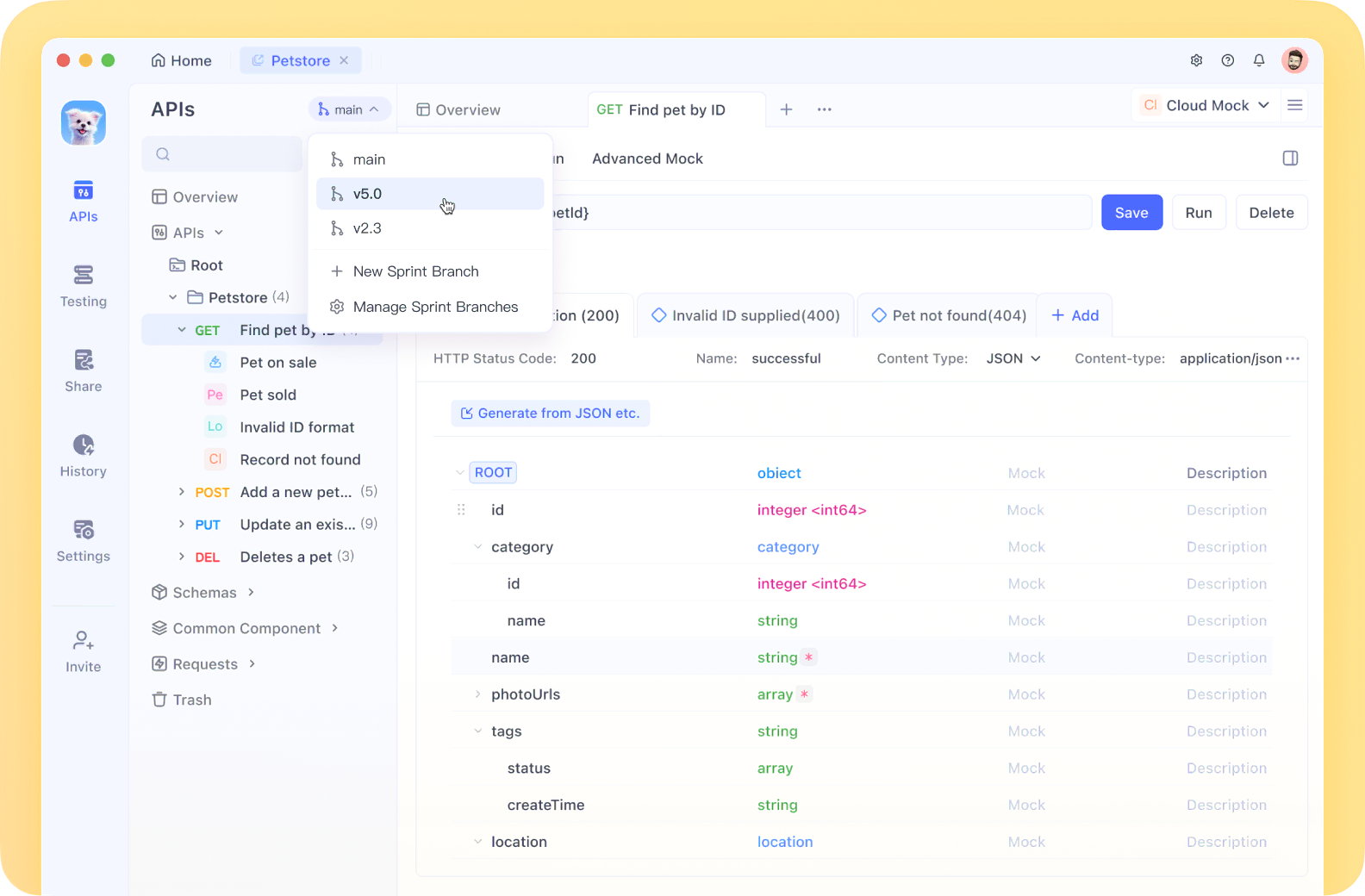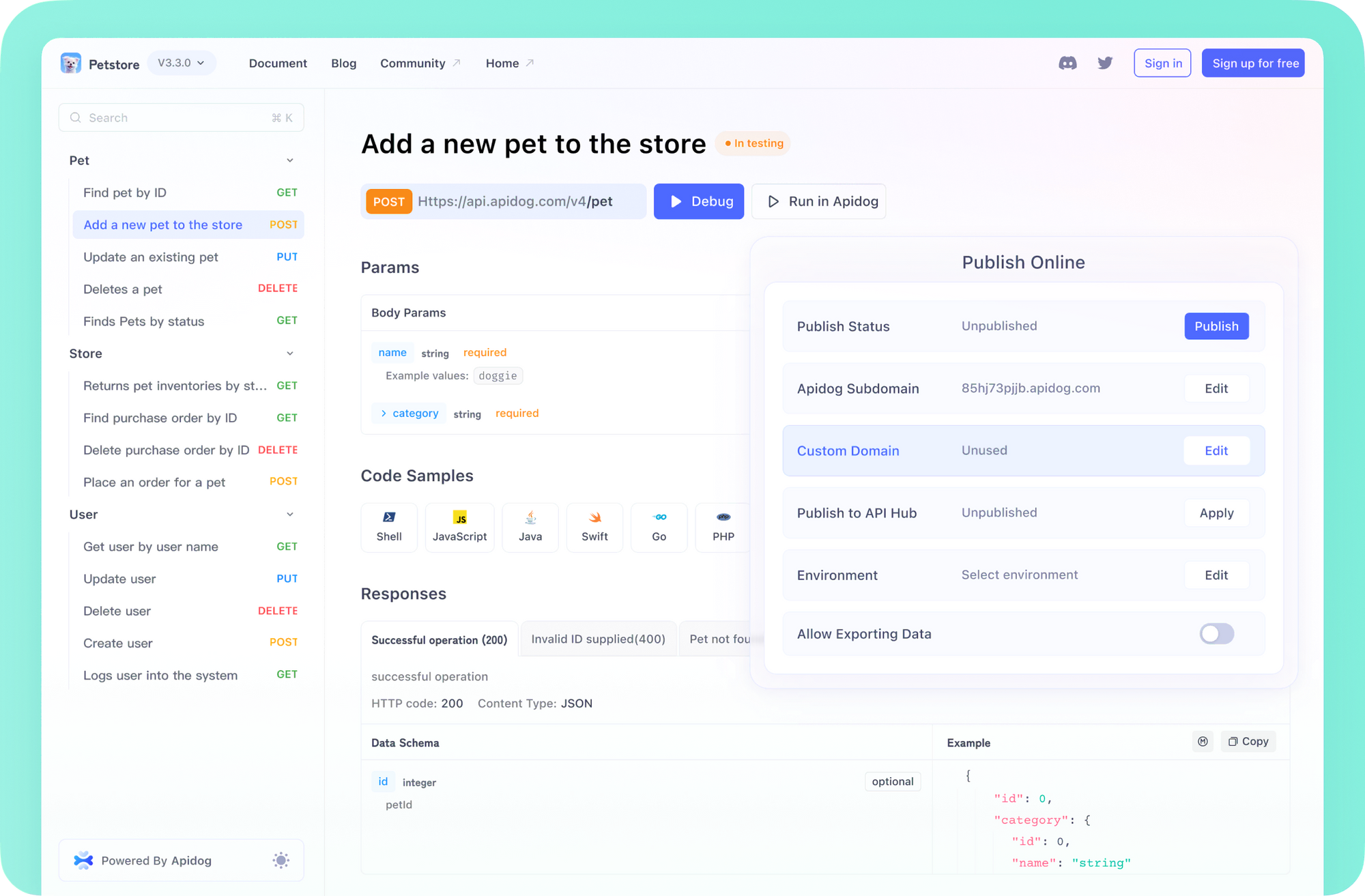In today's fast-paced mobile development environment, selecting the right iOS automation testing tool is more critical than ever. As we approach 2025, iOS testing capabilities continue to evolve, offering more sophisticated options for quality assurance teams. This comprehensive guide explores the top 12 iOS automation testing tools you need to know for 2025, providing practical insights to help you make informed decisions for your mobile testing needs.
Before diving into iOS-specific tools, it's worth mentioning Apidog as a powerful alternative to Postman for API testing in mobile applications. While traditional iOS automation focuses on UI, robust API testing has become essential for modern iOS apps that heavily rely on backend services.

Apidog offers comprehensive API testing capabilities that integrate smoothly with iOS testing workflows. Its intuitive interface, automated test generation, and CI/CD integration make it particularly valuable for teams working with complex APIs in their iOS applications.

As mobile applications increasingly depend on microservices architectures, tools like Apidog become critical components in a complete iOS testing strategy.
BrowserStack App Automate: A Versatile iOS Automation Testing Tool
BrowserStack App Automate stands out as a powerful iOS automation testing tool for 2025. This cloud-based platform offers extensive device coverage across multiple iPhone and iPad models, allowing teams to test applications on real devices without investing in physical hardware.
"BrowserStack makes testing your iOS apps across different environments easy," notes a QA engineer who frequently mentions the tool on TestGuild's automation testing podcast. "The real-time debugging capabilities and extensive device coverage save us countless hours of testing time."
Key Features of this iOS Automation Testing Tool:
- Support for multiple programming languages including Java, Python, Ruby, PHP, NodeJS, and C#
- Integration with popular frameworks like Appium, XCUITest, and Detox
- Efficient app upload feature that prevents duplicate uploads
- Media injection and authentication capabilities
- Comprehensive debugging with video recordings and logs
- App profiling metrics that track performance indicators like FPS, app loading times, and device resource usage
BrowserStack App Automate is particularly valuable for teams developing applications that need to work flawlessly across diverse iOS environments.
Appium: The Cross-Platform iOS Automation Testing Tool
Appium continues to be the most widely used open-source iOS automation testing tool entering 2025. Its popularity stems from its ability to support cross-platform testing, allowing developers to write tests once and run them on both iOS and Android platforms.
Jonathan Lipps, one of Appium's main contributors, explains: "Appium offers numerous advantages for testing teams seeking a stable, cross-platform solution. By providing a consistent WebDriver interface that abstracts underlying changes in vendor-provided tools, Appium allows test code to remain more maintainable over time."
Shannon Lee adds: "When choosing a mobile automation testing framework, Appium stands out for its ability to write a single script that runs on both Android and iOS platforms, helping to combat device fragmentation."
Key Advantages of this iOS Automation Testing Tool:
- Cross-platform capabilities that save time and reduce maintenance efforts
- WebDriver protocol support that provides stability during platform changes
- Flexibility in language support including Java, Python, JavaScript, and more
- Strong community backing and extensive resources
While it may be slower than native frameworks, its versatility and ability to maintain consistent testing architecture across platforms make it invaluable for organizations developing multi-platform applications.
XCUITest: Apple's Native iOS Automation Testing Tool
XCUITest is Apple's native UI testing framework that integrates seamlessly with Xcode. As we approach 2025, this iOS automation testing tool remains the preferred choice for many iOS developers due to its tight integration with the Apple ecosystem.
Igor Dorovskikh, an iOS testing expert, highlights that "For companies looking to optimize their iOS app testing efforts, XCUITest emerges as a powerful native solution. Shipping directly with Xcode, XCUITest offers a seamless setup process and unparalleled speed compared to cross-platform alternatives."
Benefits of this iOS Automation Testing Tool:
- Seamless integration with Xcode and Swift/Objective-C
- Faster execution compared to cross-platform alternatives
- Complete control over the application under test
- White-box testing capabilities and mocking support
"With proper architecture and best practices, XCUITest can achieve 98% stability in test automation," Dorovskikh adds. "Moreover, XCUITest fosters collaboration between QA and iOS development teams, as tests are written in the same language and reside within the same codebase."
OCmock: The Simulation iOS Automation Testing Tool
OCmock continues to be a popular iOS automation testing tool in 2025, specifically designed for creating mock objects in unit tests. This tool excels at simulating the behavior of objects that your code interacts with, enabling isolated testing without external dependencies.
"OCmock is like your typical mock object framework, and it's really good for stubbing out and making mock objects for code that leverages remote APIs or web services," explains a TestGuild podcast expert. "You can also use it for code that relies on UI objects that you can't easily instantiate in unit tests."
Strengths of this iOS Automation Testing Tool:
- Creating detailed mock objects for testing components in isolation
- Simulating interactions without requiring actual network calls
- Seamless integration with Objective-C environment
- Enhancing test speed and reliability
OCmock is particularly valuable for testing code that leverages remote APIs or web services, allowing developers to test these interactions without actual network dependencies.
KIF (Keep It Functional): The Accessibility-Focused iOS Automation Testing Tool
Keep It Functional (KIF) remains a robust iOS automation testing tool for 2025, leveraging iOS accessibility features to interact with and test app interfaces. Written in Objective-C, KIF integrates directly with Xcode, enabling tests to run within the development environment.
Eugene Berezin, an iOS developer at Nordstrom, points out that "KIF sets itself apart from other testing frameworks like XCUI Test by providing direct access to the application's codebase. This enables developers to perform more granular testing and mocking of application behavior, such as faking network responses, which can be challenging with black box testing approaches."
Features of this iOS Automation Testing Tool:
- Tests written in Objective-C/Swift rather than JavaScript
- Execution in the same target as unit tests for faster results
- Reliance on accessibility labels for navigation
- Synchronous testing on the main thread for accurate user action simulation
"A couple of specific benefits KIF has over UI Automation is that you actually are writing the test in Objective-C, which is now supporting Swift. There's no learning curve of swapping languages," notes a mobile testing expert from TestGuild.
Detox: The React Native iOS Automation Testing Tool
Detox has gained significant traction as an iOS automation testing tool, especially for React Native applications. As we move toward 2025, its speed advantages make it increasingly popular among developers working with React Native.
Eran Kinsbruner, a mobile testing expert, explains that "Detox is a powerful automation framework explicitly designed for React Native applications, gaining traction in the open-source community. Unlike traditional tools like Appium, Detox significantly enhances testing efficiency by eliminating the delays associated with pulling object trees and executing commands."
"Initially, tests that took up to 40 minutes with Appium are now reduced to about a minute and a half with Detox," Kinsbruner adds. "This speed improvement is crucial for developers and testers who need quick feedback and reliable test results."
Advantages of this iOS Automation Testing Tool:
- Significantly faster test execution compared to traditional tools
- End-to-end testing capabilities for React Native apps
- Simulation of user interactions in controlled environments
- Cross-platform support for iOS and Android
iOSSnapshotTestCase: The Visual Regression iOS Automation Testing Tool
Originally developed by Facebook (now Meta), iOSSnapshotTestCase continues to be a valuable iOS automation testing tool for visual regression testing in 2025. It allows verification of UI code through visual diffs between saved screenshots.
"You can do it at a more granular level than the full screenshot of the device," explains a TestGuild contributor. "You can pick a little UI view in what you subclass when you see a little widget on the screen; anything from a piece of text to something more complicated."
Capabilities of this iOS Automation Testing Tool:
- Visual regression testing to detect unintended UI changes
- Granular testing of specific UI components
- Support for multiple installation methods (CocoaPods, Carthage, Swift Package Manager)
- Precise isolation of visual elements for testing
iOSSnapshotTestCase is particularly useful for design-focused teams who need to ensure UI consistency across different versions and devices.
EarlGray: Google's iOS Automation Testing Tool
EarlGray, developed by Google, has gained popularity as an iOS automation testing tool that provides better performance and native capabilities compared to some alternatives. It works by mimicking user interactions and checking app responses.
Moataz Nabil, a testing expert at Delivery Hero, shared that his team "migrated from Appium to EarlGrey for iOS UI testing, to take advantage of EarlGrey's better performance and native capabilities compared to XCUITest. This allowed them to have a more robust and faster testing framework for their iOS app."
Key Strengths of this iOS Automation Testing Tool:
- Superior synchronization features that reduce test flakiness
- Integration with XCTest for UI automation
- Better performance than some competing frameworks
- Native capabilities for iOS-specific functionality
FRANK: The BDD-Focused iOS Automation Testing Tool
FRANK remains relevant in 2025 as an iOS automation testing tool for teams wanting to implement behavior-driven development (BDD) with Cucumber. Often described as "Selenium for native iOS apps," it connects your iOS application to Cucumber for acceptance testing.
"If you want to do end-to-end testing in iOS and wish you could use behavior-driven development and Cucumber, there's a tool called Frank that will allow you to create acceptance tests and requirements using Cucumber," explains a TestGuild expert.
Benefits of this iOS Automation Testing Tool:
- Integration with Cucumber for BDD-style tests
- Tests written in plain English for better stakeholder understanding
- Simple setup process (typically under 10 minutes)
- Bridge between technical implementation and business requirements
FRANK is particularly valuable for teams looking to involve non-technical stakeholders in the testing process, as tests are written in a readable, business-focused language that all team members can understand.
Choosing the Right iOS Automation Testing Tool for 2025
When selecting an iOS automation testing tool for 2025, consider these factors:
- Project Requirements: For native iOS apps, XCUITest or EarlGrey might be ideal. For cross-platform needs, Appium or Detox offer better flexibility.
- Team Expertise: Choose tools that align with your team's programming language proficiency and testing experience.
- Integration Needs: Consider how the tool will fit into your existing CI/CD pipeline and development workflow.
- Test Maintenance: Evaluate the long-term maintenance requirements of each framework.
- Performance Requirements: If speed is critical, native tools like XCUITest typically outperform cross-platform alternatives.
As mobile testing expert Joe Colantonio summarizes, "For iOS testing, the main recommendation is to use XCUITest, especially for developers, as it is well integrated into Xcode. EarlGrey is another strong iOS-specific option. Appium remains popular for cross-platform testing."
The iOS automation testing landscape continues to evolve, with tools becoming more sophisticated and easier to use. The right choice ultimately depends on your specific project needs, team capabilities, and long-term testing strategy. By carefully evaluating these top iOS automation testing tools, you can make an informed decision that enhances your mobile testing effectiveness in 2025 and beyond.



